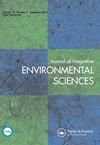非二氧化碳温室气体的全球减缓:到2030年的边际减排成本曲线和减排潜力
IF 3.5
4区 环境科学与生态学
Q3 ENVIRONMENTAL SCIENCES
Journal of Integrative Environmental Sciences
Pub Date : 2015-12-11
DOI:10.1080/1943815X.2015.1110182
引用次数: 30
摘要
除二氧化碳(CO2)外,温室气体(ghg)在认识和应对全球气候变化方面发挥着重要作用。2005年,约25%的全球变暖潜势加权温室气体排放是非二氧化碳温室气体。《全球非二氧化碳温室气体减排:2010-2030年》报告提供了一份全面的全球分析和边际减排成本曲线数据集,说明了按部门和区域分列的非二氧化碳温室气体减排潜力。其基本方法是一种自下而上的工程成本方法,以环境保护署公布的非二氧化碳排放基线预测为基础,将减排方案应用于每个部门的排放基线。分析的结果是MAC曲线,它反映了在给定部门和地区实施减排方案的总盈亏平衡价格。该报告的主要结论之一是,非二氧化碳源存在着重大的、具有成本效益的减排措施,而且目前有可用的减排方案。如果没有价格信号(即每吨二氧化碳当量为0美元),全球减排潜力将大于18亿吨二氧化碳当量。在全球范围内,能源和农业部门具有最大的减排潜力。在非co2温室气体中,甲烷具有最大的减排潜力。尽管有可能节省项目一级的成本和环境效益,但减少非二氧化碳排放的障碍仍然存在。本文将概述该报告的方法和主要发现。本文章由计算机程序翻译,如有差异,请以英文原文为准。
Global mitigation of non-CO2 greenhouse gases: marginal abatement costs curves and abatement potential through 2030
Abstract Greenhouse gases (GHGs) other than carbon dioxide (CO2) play an important role in the effort to understand and address global climate change. Approximately 25% of Global warming potential-weighted GHG emissions in the year 2005 comprise the non-CO2 GHGs. The report, Global Mitigation of Non-CO2 Greenhouse Gases: 2010–2030 provides a comprehensive global analysis and resulting data-set of marginal abatement cost curves that illustrate the abatement potential of non-CO2 GHGs by sector and by region. The basic methodology – a bottom-up, engineering cost approach – builds on the baseline non-CO2 emissions projections published by EPA, applying abatement options to the emissions baseline in each sector. The results of the analysis are MAC curves that reflect aggregated breakeven prices for implementing abatement options in a given sector and region. Among the key findings of the report is that significant, cost-effective abatement exists from non-CO2 sources with abatement options that are available today. Without a price signal (i.e. at $0/tCO2e), the global abatement potential is greater than 1800 million metric tons of CO2 equivalent. Globally, the energy and agriculture sectors have the greatest potential for abatement. Among the non-CO2 GHGs, methane has the largest abatement potential. Despite the potential for project level cost savings and environmental benefits, barriers to mitigating non-CO2 emissions continue to exist. This paper will provide an overview of the methods and key findings of the report.
求助全文
通过发布文献求助,成功后即可免费获取论文全文。
去求助
来源期刊

Journal of Integrative Environmental Sciences
ENVIRONMENTAL SCIENCES-
CiteScore
3.90
自引率
0.00%
发文量
13
审稿时长
>12 weeks
期刊介绍:
Journal of Integrative Environmental Sciences (JIES) provides a stimulating, informative and critical forum for intellectual debate on significant environmental issues. It brings together perspectives from a wide range of disciplines and methodologies in both the social and natural sciences in an effort to develop integrative knowledge about the processes responsible for environmental change. The Journal is especially concerned with the relationships between science, society and policy and one of its key aims is to advance understanding of the theory and practice of sustainable development.
 求助内容:
求助内容: 应助结果提醒方式:
应助结果提醒方式:


